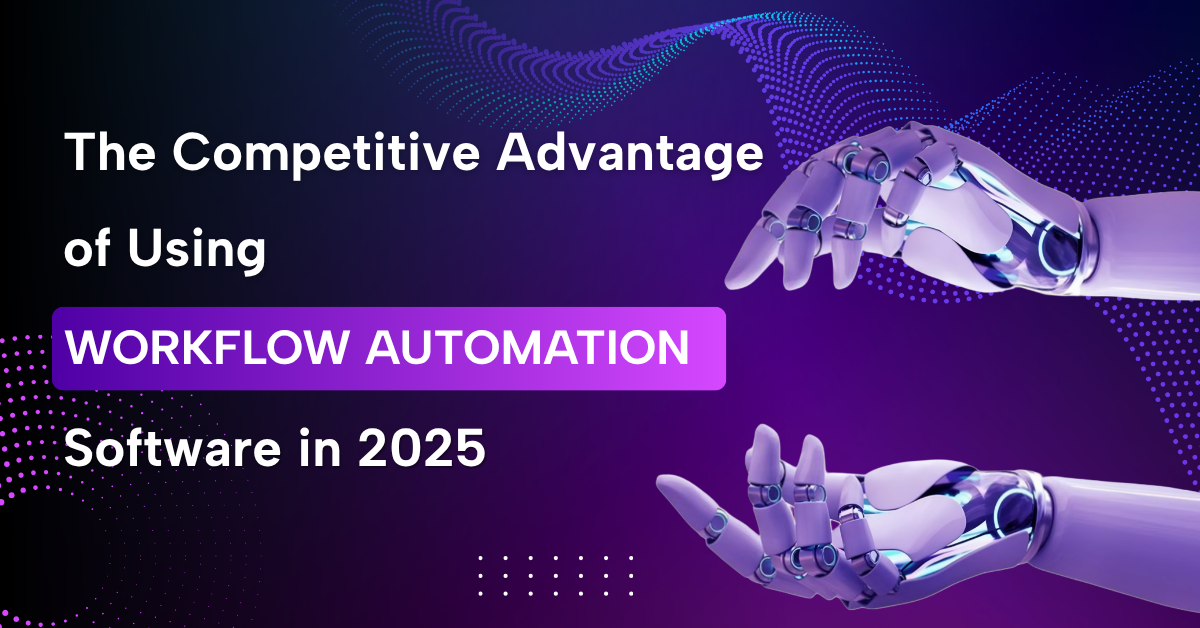The Competitive Advantage of Using Workflow Automation Software in 2025

In today’s fast-paced business environment, efficiency and agility are no longer optional they are essential. Companies are under constant pressure to deliver faster, reduce costs, and adapt to shifting market demands. Manual processes, fragmented tools, and disconnected systems create bottlenecks that slow down operations and limit growth. In 2025, businesses that adopt workflow automation software integrated with a comprehensive enterprise resource planning system gain a clear competitive advantage. This combination ensures that organizations can operate more efficiently, make smarter decisions, and scale seamlessly.
Why Automation Matters More Than Ever
The business landscape has changed dramatically over the past decade. Remote work, digital customer interactions, and the demand for real-time insights have introduced new operational complexities. Organizations face several challenges:
- Manual Workload Overload: Repetitive tasks like data entry, invoice approvals, and report generation consume time that could be spent on strategic initiatives.
- Siloed Operations: Departments often work in isolation, using different tools for finance, HR, operations, and project management. This creates inefficiencies and miscommunication.
- Delayed Decision-Making: Without real-time access to accurate data, managers struggle to make timely decisions.
- Scaling Challenges: As businesses grow, manual processes and disconnected tools cannot handle increased complexity, slowing down progress.
By integrating workflow automation software with an enterprise resource planning system, businesses can address these challenges and optimize their entire operational ecosystem.
How Workflow Automation Software Transforms Operations
1. Streamlined Cross-Department Workflows
Automation software enables organizations to automate repetitive processes across departments. When integrated with an ERP system, it ensures that every department finance, HR, operations, and sales works within a unified framework. For example:
- Finance teams can automate invoice approvals and expense management.
- HR can streamline leave approvals, payroll processing, and recruitment workflows.
- Operations can automate inventory updates and order processing.
This streamlining reduces delays, minimizes errors, and ensures that every team operates with consistent data.
2. Enhanced Accuracy and Data Integrity
Manual processes are prone to mistakes typos, duplicated data, and inconsistent entries are common. Workflow automation software ensures that data is captured and updated in real-time across the enterprise resource planning system, maintaining accuracy and integrity. Accurate data enables reliable reporting, better forecasting, and informed strategic decisions.
3. Improved Productivity and Employee Focus
By automating repetitive and time-consuming tasks, employees can focus on higher-value work such as strategy, innovation, and customer engagement. This shift not only boosts productivity but also enhances employee satisfaction, as teams can work on meaningful tasks rather than tedious administrative work.
4. Real-Time Insights and Decision-Making
Modern automation tools provide dashboards and analytics that give managers instant visibility into task progress, financial metrics, project timelines, and overall operational performance. Integrating this with an ERP system ensures that these insights are based on a single source of truth. Real-time access to accurate information empowers leaders to make smarter, faster, and more strategic decisions.
5. Scalability and Flexibility
As businesses grow, manual processes often become bottlenecks. Workflow automation software scales seamlessly with your operations, handling larger volumes of tasks, more complex workflows, and multiple departments. Integration with ERP systems adds flexibility, allowing processes to evolve without disrupting existing operations.
Key Benefits of Workflow Automation for Modern Enterprises
- Cost Efficiency: Automating routine tasks reduces labor costs and operational errors.
- Time Savings: Faster approvals, automated notifications, and streamlined workflows save hours of manual effort every week.
- Better Collaboration: Centralized systems break down silos, enabling teams to collaborate efficiently across functions.
- Enhanced Compliance: Automated workflows ensure regulatory and policy adherence without manual oversight.
- Competitive Advantage: Businesses using automation can respond faster to market changes, deliver projects on time, and innovate continuously.
Implementing Workflow Automation Successfully
To maximize the benefits of workflow automation software, businesses should follow these best practices:
1. Identify Key Processes to Automate
Start with high-impact, repetitive tasks such as approvals, notifications, and report generation. Prioritize processes that consume the most time or have the highest risk of errors.
2. Integrate with Enterprise Systems
Seamless integration with an enterprise resource planning system ensures that automation enhances existing workflows rather than creating new silos.
3. Provide Training and Support
Employees should understand how to use the automation tools effectively. Comprehensive training ensures adoption and maximizes ROI.
4. Monitor, Measure, and Optimize
Use analytics dashboards to track performance, identify bottlenecks, and continuously optimize workflows for maximum efficiency.
5. Promote a Culture of Automation
Automation should be seen as a strategic enabler rather than a replacement for human effort. Encouraging teams to embrace these tools fosters innovation, accountability, and efficiency.
Why Businesses Cannot Ignore Workflow Automation in 2025
The business world in 2025 rewards speed, efficiency, and adaptability. Organizations that rely on manual workflows or disconnected tools risk falling behind competitors who embrace automation. Workflow automation software integrated with an enterprise resource planning system not only optimizes operations but also empowers employees, improves decision-making, and scales with business growth.
Businesses that implement these solutions can reduce costs, increase productivity, and maintain a sustainable competitive edge. In essence, automation is not just a technology investment it is a strategic necessity for any organization aiming to thrive in a digital-first, data-driven era.



 Sep 30,2025
Sep 30,2025  By yogesh shinde
By yogesh shinde 




